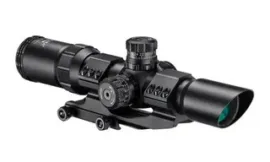1. What is a Remote Diagnostic Agent?
A remote diagnostic agent is a software tool or system designed to monitor and analyze data from remote devices, systems, or infrastructure. Its primary role is to detect anomalies, track performance, and alert users to potential issues before they cause significant damage or downtime. These agents are particularly popular in industries like IT, healthcare, and manufacturing, where constant system availability is essential.
In essence, remote diagnostic agents act like a 24/7 surveillance team for your devices, collecting data and identifying potential risks in real time.
2. How Remote Diagnostic Agents Work: An In-Depth Look
The functionality of a remote diagnostic agent is based on a combination of data collection, analysis, and automated decision-making. Here’s a breakdown of how they work:
- Data Collection: The agent continuously gathers data from systems, devices, or machines, including logs, performance metrics, and user interactions.
- Analysis: The data is processed through algorithms or predefined rules to detect patterns and identify potential issues, such as hardware failures or software malfunctions.
- Alerts: If the system detects an anomaly, it automatically sends alerts to technicians or administrators, allowing them to address the issue remotely.
- Resolution: In some cases, the agent can take automatic corrective action, such as rebooting a system, updating software, or rerouting processes to ensure continuous uptime.
This real-time monitoring and analysis make remote diagnostic agents invaluable for businesses that rely on seamless system operations.
3. Top Benefits of Using Remote Diagnostic Agents
There are numerous benefits to adopting a remote diagnostic agent for your business:
- Cost Savings: By catching issues early, businesses can save money on costly repairs or system replacements. Early detection also prevents major system failures, which can result in high repair costs.
- Reduced Downtime: Remote diagnostic agents help prevent long periods of system outages by identifying problems before they escalate, allowing technicians to resolve issues quickly and remotely.
- Improved Efficiency: These agents automate monitoring and diagnostics, reducing the need for on-site technicians and allowing businesses to operate more efficiently.
- 24/7 Monitoring: One of the major advantages is continuous monitoring, ensuring that issues can be flagged and addressed even during non-business hours.
- Scalability: As businesses grow, remote diagnostic agents can scale to accommodate increased system complexity, offering continuous monitoring without significant overhead.
4. Applications of Remote Diagnostic Agents in IT and Healthcare
Remote diagnostic agents have broad applications in various industries, but they are particularly valuable in IT and healthcare.
- IT Infrastructure: In IT, remote diagnostic agents monitor servers, networks, and hardware systems to detect failures, bandwidth issues, and security breaches. For example, IT support teams can resolve issues remotely, reducing the need for in-person troubleshooting.
- Healthcare: In the healthcare industry, these agents help monitor medical equipment and patient health data in real-time, ensuring critical devices remain operational and minimizing the risk of failures in life-saving technology.
5. Top Remote Diagnostic Tools for Businesses
There are several remote diagnostic tools available to businesses, each offering unique features tailored to specific industries:
- SolarWinds Diagnostic Agent: A popular choice for IT professionals, this tool offers real-time network and server monitoring, along with automatic alerts and reporting.
- Splunk: Known for its robust data analytics capabilities, Splunk helps businesses gather, analyze, and visualize system data for comprehensive diagnostics.
- PRTG Network Monitor: Designed for monitoring networks and servers, PRTG provides real-time updates and detailed reporting on infrastructure performance, making it a go-to tool for IT teams.
Choosing the right tool depends on your specific needs, but all these options provide excellent monitoring and diagnostic capabilities for businesses.
6. Challenges and Limitations of Remote Diagnostic Agents
While remote diagnostic agents offer many benefits, they are not without their challenges:
- Privacy Concerns: The constant data collection and monitoring raise concerns about privacy, particularly in industries handling sensitive information, like healthcare.
- False Positives: Some diagnostic agents may trigger false alerts, leading to unnecessary interventions and wasted resources.
- Technical Limitations: In some cases, remote diagnostic agents may not fully resolve issues, especially those requiring physical repairs or hardware replacements.
Despite these challenges, the benefits of using remote diagnostic agents typically outweigh the drawbacks, especially when properly integrated into a business’s operations.
7. Remote Monitoring and Diagnostics: A Game Changer for Businesses
Remote monitoring and diagnostics are revolutionizing industries by allowing businesses to manage complex systems from afar. For companies with multiple locations or remote teams, these tools provide peace of mind by ensuring all systems are functioning as expected. Remote diagnostics also allow businesses to reduce operational costs by minimizing the need for on-site visits.
Industries such as telecommunications, finance, and manufacturing rely heavily on remote diagnostics to monitor systems, maintain uptime, and avoid costly disruptions.
8. The Future of Remote Diagnostics: AI and Predictive Analytics
The future of remote diagnostic agents is bright, particularly with the rise of artificial intelligence (AI) and predictive analytics. AI-driven diagnostics can analyze vast amounts of data faster than humans, enabling more accurate predictions of potential failures before they occur. With predictive maintenance, businesses can foresee when systems or machines will need servicing, reducing unexpected downtime.
As technology evolves, remote diagnostic agents will likely become even more sophisticated, playing a critical role in ensuring seamless operations across various industries.
9. How to Implement a Remote Diagnostic Agent for Your Business
Implementing a remote diagnostic agent for your business requires a well-planned approach to ensure optimal performance. Here’s a step-by-step guide:
- Assess Your Needs: Start by identifying what systems or devices require monitoring. Different industries may have varying requirements, from IT infrastructure to manufacturing equipment.
- Choose the Right Tool: Based on your needs, select a remote diagnostic tool that aligns with your industry’s demands. Consider scalability, ease of integration, and the specific features that will benefit your business.
- Train Your Team: Once the tool is implemented, ensure that your team is trained to use it effectively. This includes knowing how to interpret diagnostic data, setting up alert thresholds, and troubleshooting issues remotely.
- Monitor and Adjust: After implementation, continually monitor the agent’s performance. Fine-tune alert settings and reporting structures to minimize false positives and improve response times.
By following these steps, businesses can successfully implement remote diagnostic agents and maximize their return on investment.
10. Enhancing Cybersecurity with Remote Diagnostic Agents
As businesses become increasingly reliant on digital infrastructures, cybersecurity has become a top priority. Remote diagnostic agents play a crucial role in identifying potential cybersecurity threats before they escalate. By continuously monitoring network performance and detecting irregular patterns in real time, these agents help prevent breaches that could compromise sensitive information.
Many remote diagnostic tools are now equipped with cybersecurity features, allowing them to track login attempts, unauthorized access, and suspicious activity. For example, diagnostic agents can flag anomalies like unusual login locations or abnormally high data transfers, notifying security teams to take immediate action. This proactive approach is essential for businesses that store large amounts of sensitive data, such as financial institutions and healthcare providers.
Integrating remote diagnostic agents into your cybersecurity infrastructure not only enhances security but also minimizes the impact of potential threats, allowing businesses to remain operational during an attack.
11. Remote Diagnostic Agents in Predictive Maintenance
Predictive maintenance is one of the most significant advancements enabled by remote diagnostic agents. By analyzing historical data and identifying patterns in equipment performance, these agents can predict when a machine or system is likely to fail. This allows businesses to schedule maintenance before a breakdown occurs, reducing the risk of unexpected downtime.
Industries such as manufacturing, utilities, and transportation have greatly benefited from predictive maintenance powered by remote diagnostics. For example, machinery in factories can be continuously monitored for temperature changes, vibration patterns, or wear and tear. When the diagnostic agent detects deviations from the norm, it alerts technicians to inspect the equipment, preventing costly repairs or production delays.
As AI and machine learning continue to improve, predictive maintenance will become even more precise, revolutionizing how businesses manage and maintain their critical assets.
For more exciting blogs, visit our homepage Magzineco.
12. Conclusion: Why Remote Diagnostic Agents Are Essential for Modern Businesses
In today’s fast-paced, technology-driven environment, remote diagnostic agents have become essential for ensuring continuous operations, reducing downtime, and preventing costly repairs. Whether you’re running an IT firm, managing healthcare devices, or operating a manufacturing plant, these tools provide real-time monitoring and diagnostics that can save your business time and money. With advancements in AI and predictive analytics, the future of remote diagnostics holds even greater potential, making it a vital part of any modern business strategy.
FAQs About Remote Diagnostic Agents
- What is a remote diagnostic agent?
- A remote diagnostic agent is software that collects and analyzes data from systems or devices to detect issues and notify users of potential problems.
- How does a remote diagnostic agent work?
- It works by continuously monitoring devices, analyzing performance data, and alerting users to anomalies. In some cases, it can take automated corrective action.
- What are the benefits of remote diagnostic agents?
- Key benefits include cost savings, reduced downtime, 24/7 monitoring, improved efficiency, and scalability.
- Which industries benefit from remote diagnostic agents?
- Industries like IT, healthcare, manufacturing, and telecommunications benefit greatly from these tools.
- What are the challenges of using remote diagnostic agents?
- Challenges include privacy concerns, false alerts, and the need for regular updates to keep the system effective.
- Can remote diagnostic agents prevent system failures?
- Yes, these agents can predict and prevent potential failures by detecting early signs of malfunctions or performance drops.
- What is the future of remote diagnostics?
- The future includes AI-powered diagnostics and predictive analytics, offering even more accurate and efficient solutions.




